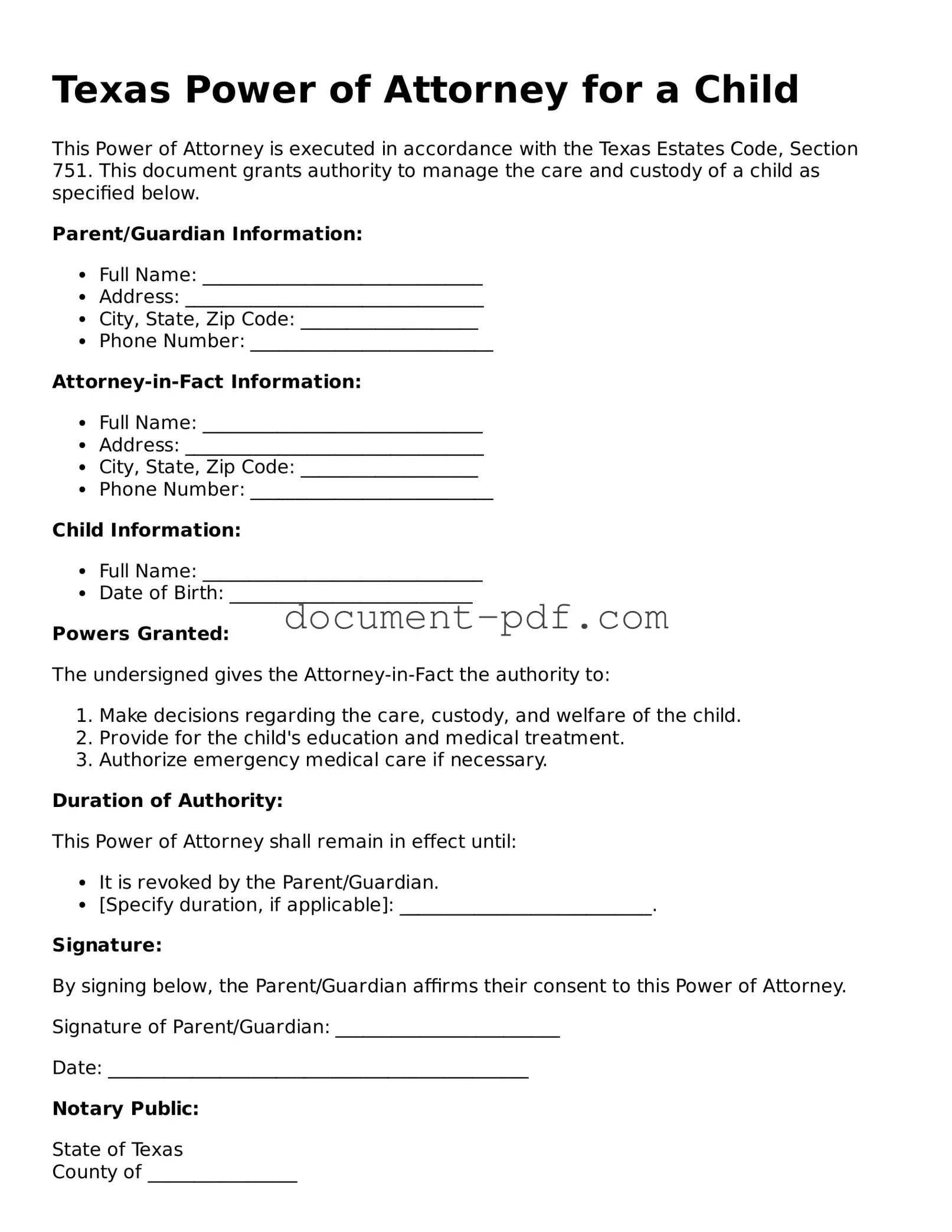Texas Power of Attorney for a Child
This Power of Attorney is executed in accordance with the Texas Estates Code, Section 751. This document grants authority to manage the care and custody of a child as specified below.
Parent/Guardian Information:
- Full Name: ______________________________
- Address: ________________________________
- City, State, Zip Code: ___________________
- Phone Number: __________________________
Attorney-in-Fact Information:
- Full Name: ______________________________
- Address: ________________________________
- City, State, Zip Code: ___________________
- Phone Number: __________________________
Child Information:
- Full Name: ______________________________
- Date of Birth: __________________________
Powers Granted:
The undersigned gives the Attorney-in-Fact the authority to:
- Make decisions regarding the care, custody, and welfare of the child.
- Provide for the child's education and medical treatment.
- Authorize emergency medical care if necessary.
Duration of Authority:
This Power of Attorney shall remain in effect until:
- It is revoked by the Parent/Guardian.
- [Specify duration, if applicable]: ___________________________.
Signature:
By signing below, the Parent/Guardian affirms their consent to this Power of Attorney.
Signature of Parent/Guardian: ________________________
Date: _____________________________________________
Notary Public:
State of Texas
County of ________________
On this ______ day of ____________, 20__, personally appeared _______________________ who is known to me to be the person whose name is subscribed to the foregoing document, and acknowledged that they executed the same for the purposes therein expressed.
Notary Signature: ____________________________
Notary Printed Name: ________________________
My commission expires: _______________________
